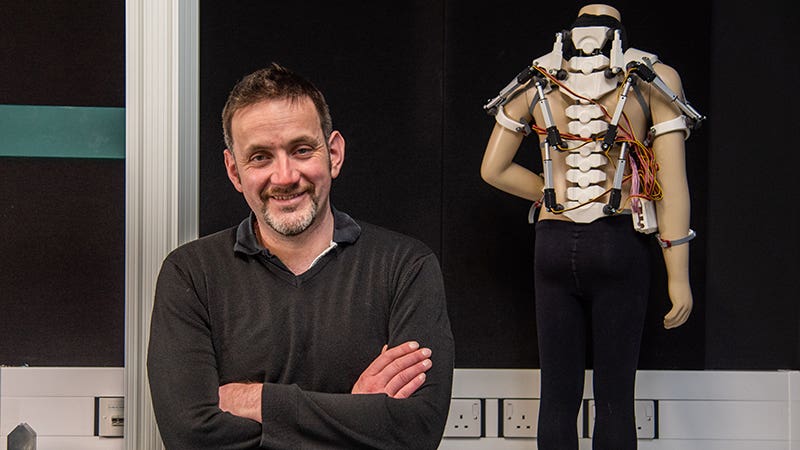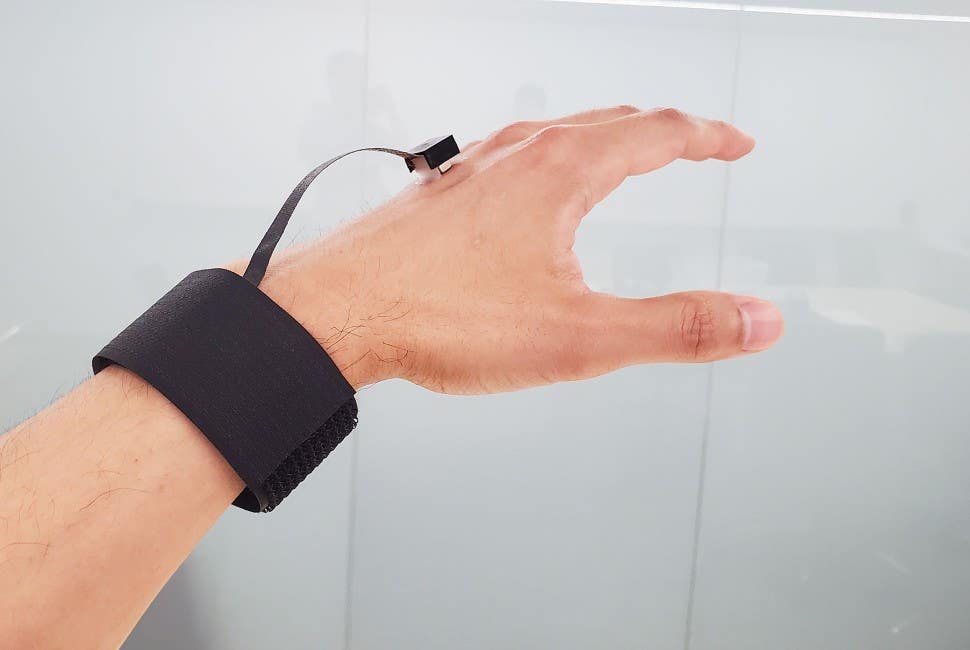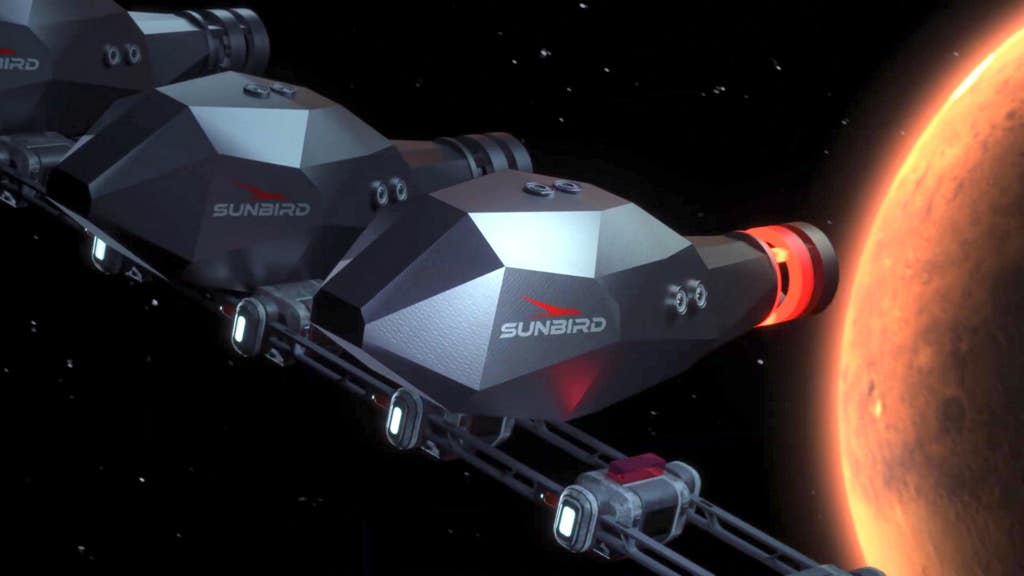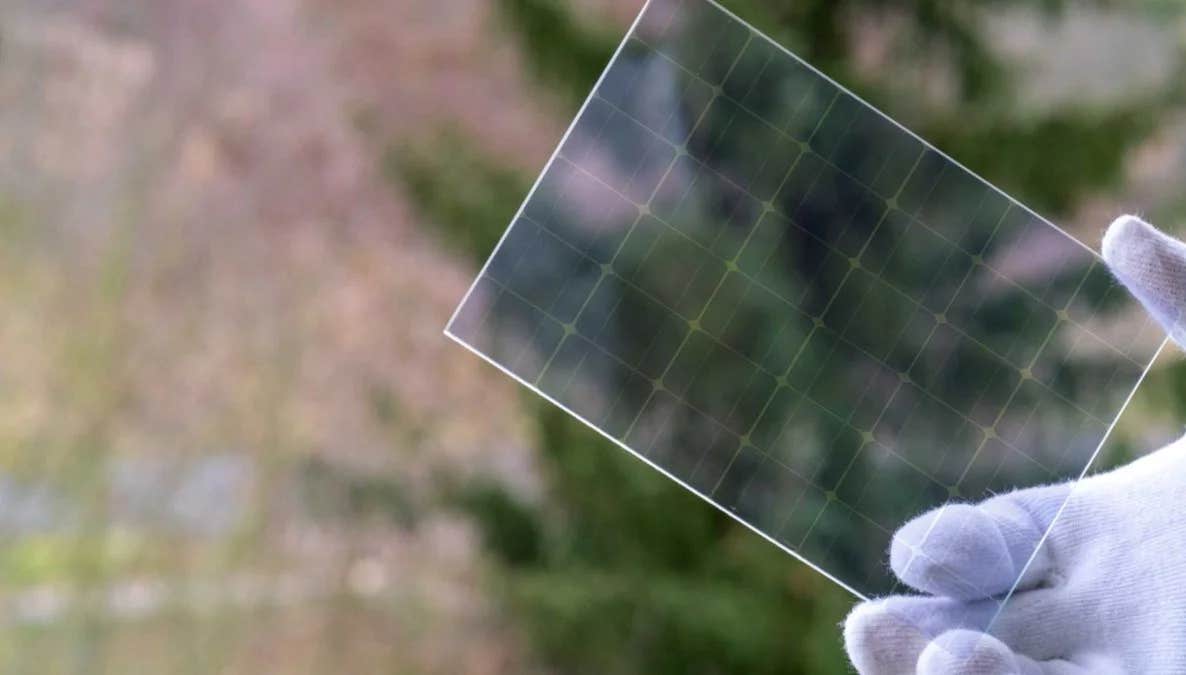3D-printed exoskeleton could offer disabled children a helping hand
Sometimes it takes a child’s question to highlight the obvious. Why is there not a special shirt that children can wear that will help them?

[May 18, 2021: Joseph Flaig]
Sometimes it takes a child’s question to highlight the obvious.
The question for Dr Matt Dickinson from the University of Central Lancashire was: “Why is there not a special shirt that children can wear that will help them move?”
The query and a rough design were provided by Christina, a school pupil taking part in the Primary Engineer competition, which combines children’s imagination with the engineering expertise of companies such as Rolls-Royce to find solutions to the world’s problems.
“I instantly saw then that she’s obviously referring to some type of exoskeleton,” said Dickinson. “I thought there’s millions of these, they’re everywhere all over the world.”
Having done some research, however, he was shocked to find that nothing met the design brief. Christina’s cousin has spinal muscular atrophy, and needed extra support to balance and move.
After initially exploring aluminium as an option – “it would have been stupidly expensive” – Dickinson decided to build a device using 3D-printed materials, and is now testing it with Pennsylvania’s Tinius Olsen Testing Machine Company.
Restoring mobility
Exoskeletons have been printed before. One example from US firm 3D Systems is the Ekso suit, a motorised device to help restore mobility to paralysed users. Other projects, such as one from Transilvania University of Brasov, Romania, have printed components for exoskeleton robots used for elbow joint rehabilitation.
Unlike other devices, however, Dickinson’s exoskeleton is a passive assistive tool without powered components. Described as a ‘big helping hand,’ it offers increased mobility and strength by supporting the upper body and keeping it balanced.
It includes a rear ‘spine’, with neoprene between the spinal segments. When the upper body leans, part of the force is distributed throughout the printed spine, which ‘locks’ into position. The neoprene connections help provide support on the left and right, as well as forwards and backwards.
Dickinson picked composite material polylactic acid as a base, printed using fused deposition modelling, which heats and extrudes the material layer by layer. The material could potentially leach into the skin, however, so parts that are in contact with the body are coated with anti-microbial copper. The 3D printing allows for quick construction, updates and repair, as well as tailoring the design for bespoke needs. In future, Dickinson hopes to include non-Newtonian forms, which are soft most of the time but harden as soon as a load is applied.
The materials and design are undergoing extensive testing at Tinius Olsen. “What we’re aiming to be able to do is look at the level of loading on the muscle by looking at strain gauges attached to the lower limb system,” said Dickinson. The testing also uses force plates to assess the load on the user’s muscles.
Stroke survivors
The project is aiming for human trials in June, and it has gained attention for applications beyond children. It could be a potential treatment for stroke survivors and other related medical issues.
Dickinson also now sits on the exoskeleton standards committee of the American Society for Testing and Materials, along with partners such as the US military, and the design has even attracted attention from NASA. The combination of a 3D-printed exoskeleton with a copper coating could be suitable for astronauts travelling to Mars, for example, with the device providing muscular support and the copper preventing degradation from body sweat.
So the 3D-printed exoskeleton could go from the classroom to the surface of another planet.
Like these kind of feel good stories? Get the Brighter Side of News' newsletter.
Tags: #New_Innovation, #Medical_Good_News, #The_Brighter_Side_of_News
Joseph Shavit
Head Science News Writer | Communicating Innovation & Discovery
Based in Los Angeles, Joseph Shavit is an accomplished science journalist, head science news writer and co-founder at The Brighter Side of News, where he translates cutting-edge discoveries into compelling stories for a broad audience. With a strong background spanning science, business, product management, media leadership, and entrepreneurship, Joseph brings a unique perspective to science communication. His expertise allows him to uncover the intersection of technological advancements and market potential, shedding light on how groundbreaking research evolves into transformative products and industries.



